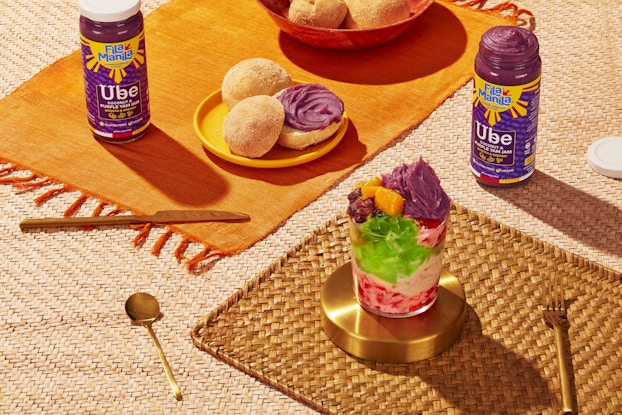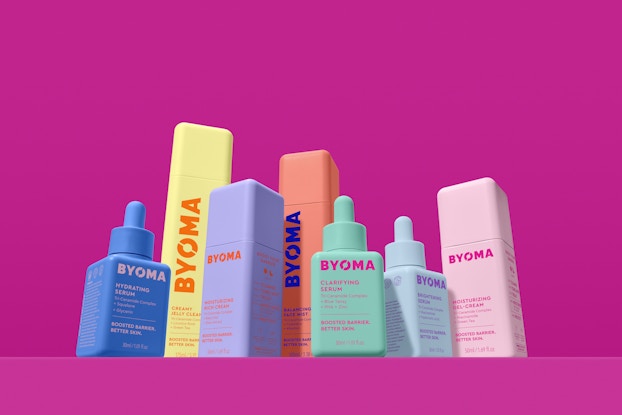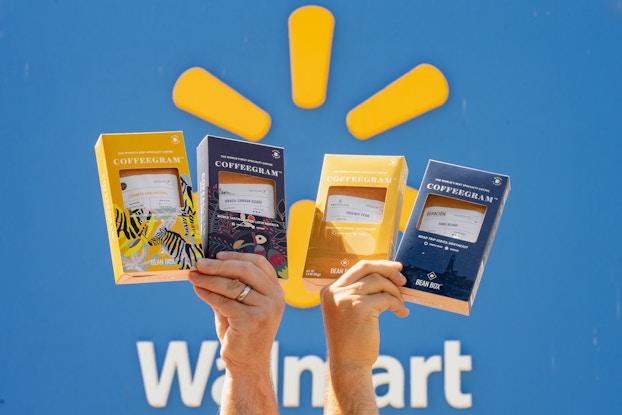
Insights for startup brands looking to expand into mass-market retailers:
- For startups expanding into big retail, business strategies must consistently evolve to meet industry demands and customer segments.
- The right investment in product innovation, marketing, and distribution can combine to generate both brand awareness and customer-acquisition gains.
- Leveraging insights from DTC sales can help tailor product and packaging to best meet the needs of today’s consumers in the specific offline channel in which they are shopping, from supermarkets to beauty retailers.
Mass market and specialty retailers like Target and Ulta are looking to startups to differentiate their assortments and speak to consumers who are young, diverse, and increasingly driven by digital influences like TikTok.
As they expand into national retailers, three brands are bringing something new to store shelves, while leveraging their small scale to stay nimble and ensure that products evolve to meet customer expectations.
Fila Manila is bringing traditional Filipino flavors and sauces to the nation’s top grocers including Whole Foods, Sprouts, and Target. BYOMA, an accessibly priced skincare brand developed within innovation incubator Future Beauty Labs, launched a year ago and is already carried in Ulta and Target. And Bean Box, a specialty marketplace curating varieties of small-batch coffees, has expanded from its DTC and subscription model and adjusted its products to stand out on the shelves of national retailers like Walmart.
Here, the three founders share their insights on how they made the leap to big retail in their own words.
Fila Manila: Leveraging authenticity to bring Filipino flavors to new audiences
Jake Deleon, Founder
[Condiment brand] Fila Manila was created during the 2020 lockdowns. During that period, I read an article that highlighted that in some areas, Filipinos comprised almost 20% of the healthcare workforce on the front lines of COVID. As a first-generation Filipino American immigrant myself, this insight led me to learn more about our community, and I learned that Filipinos are the second-largest Asian-American community in the U.S.
Yet, coming from a career in consumer food, my mind went to the grocery shelves. If we’re such a big part of the community, why was there almost zero representation of our cuisine in mass grocery stores?
Our first products at Fila Manila were a range of cooking sauces inspired by my Filipino family’s favorite homecooked meals. While the recipes were derived from my parents’ and grandparents’ home cooking, I kept in mind the needs of the modern U.S. consumer that thinks about eating cleaner and healthier. As a result, I made tweaks to my family recipes by converting them to more wholesome versions that meet the demands of the modern consumer, such as vegan, no artificial colors or flavors, and gluten free.
We’ve seen on social media and in stores that [U.S. consumers] have been our biggest cheerleaders and brand champions — they will recommend and share the love of Fila Manila to their circle of friends and colleagues who are often not Filipino. We’ve heard numerous comments that this community is so proud and excited to see a modern and relevant take on the cuisine and culture that is so part of their lives. They get so excited to share it with others.
I believe that the success of a business and brand is tied to the values, vision, and heart of the founder and the team. Although it is never an easy journey being a founder/CEO, my team and I take great pride and fulfillment in that we’re making an impact in the marketing by means of finally adding Filipino representation to grocery shelves [at retailers such as Whole Foods]. I was able to leverage my knowledge and experiences growing up in the Filipino community to add true authenticity to our brand story as well as marketing efforts to get our brand known nationwide.
[Read: BIPOC Business Leaders From Indeed, Twitter and More Share Success Tips for Entrepreneurs]

BYOMA: Let your customers guide your innovation
Marc Elrick, CEO & Founder
Everything we create at Future Beauty Labs starts with the consumer. [Skincare brand] BYOMA is no exception and was developed to fulfill a very real consumer need. With a groundbreaking proprietary [skin] barrier [the outermost layer of your skin] health complex, BYOMA seeks to become the ultimate accessible and affordable barrier care and wellness solution for every single skincare user in the world.
With BYOMA, we set out to inspire, empower, and educate skincare users to achieve their best skin day, every day. To do that, we launched ourselves into a conversation they were already having in the exact channels they were having it.
During the initial COVID lockdown, we noticed a lot of people playing chemist in their bathrooms, experimenting with new, super-strength [active ingredients] with less than desirable results, without realizing that they were stripping their skin through overusing and over-exfoliating, ultimately breaking their skin barriers in search of short term, quick fixes.
BYOMA launched in February 2022 but has quickly fostered a connected community who are highly engaged with us. They’re constantly sharing what they’re loving and what they’d like to see next. It’s an amazing feeling being able to develop with this consumer-first approach and I feel so incredibly inspired every single day.
BYOMA launched in February 2022 but has quickly fostered a connected community who are highly engaged with us. They’re constantly sharing what they’re loving and what they’d like to see next. It’s an amazing feeling being able to develop with this consumer-first approach and I feel so incredibly inspired every single day.
Marc Elrick, CEO & Founder, BYOMA
Now, [less than a year] later, BYOMA is winning awards and has been featured in a TikTok case study, showcasing that the products we’ve created are really resonating not just with press, consumers, and influencers, but at an industry level, too.
We’re a data driven business, so everything is informed by facts, research, and science. When you have such a clear goal from the outset, it’s easier to build something that becomes quickly recognizable because it’s coming from a place of authenticity — quality skincare that users are now demanding from the brands they use.
Know those you serve better than anyone else, and you’ll be able to create and deliver the solutions they truly want and need. The best entrepreneurs will tailor great ideas to serve the consumer, not sell to them.
[Read: Hispanic App Entrepreneurs Find Success Filling Market Void for Culturally Authentic Content]

Bean Box: New product distribution channels require new strategies
Matthew Berk, Co-Founder and CEO
After living in and working together in Seattle’s tech scene for over a decade, my co-founder and I would use coffee as a source of inspiration and a way to connect with colleagues and the people we love. We founded [subscription coffee brand] Bean Box to share the joy of uniquely sourced, small-batch, locally roasted beans with other coffee lovers, leveraging our backgrounds in technology to help consumers around the country discover their next favorite cup.
Over the years, we’ve learned a ton about what it means to sell coffee, grow a direct-to-consumer business, and now operate a wholesale operation. Key among our insights is to try to meet the customer where they are with a set of products that meet their shifting needs, as opposed to mandating that they fit their personal needs into your business model. Key example: Subscription revenue is great, but subscriptions don’t work for all customers.
Historically, specialty coffee availability has been limited to urban hotspots and a fragmented set of local cafes across the country. The pandemic fueled the growth of the specialty coffee market at home — the global specialty coffee market is expected to reach $117 billion-plus by 2028, and with more consumers enjoying higher quality coffee at home, we are actively partnering with retailers to reach consumers wherever they buy coffee.
Breaking into a national retailer like Walmart, which is a central part of neighborhoods nationwide, allows us to accomplish our overall goal. Our unique product offering fills this customer’s demand for high-end coffee without the commitment of buying a 12-ounce or full-pound bag of coffee and not knowing if they will like it.
We are just starting to meet customers where they shop offline, and so you need to have enough of a differentiation to pique their interest and get them to purchase and experience the product firsthand. We have always known that going into retail would require a different kind of packaging in order to stand out on the shelf. While a customer might not purchase a Coffeegram [single-pot collection] the first time they see it, that first impression is crucial to increasing awareness.
As a DTC brand, we have access to tons of data about our customers’ purchase patterns that we are able to take internally and pivot our offerings to give ourselves the best chance of success. As a simple example, we have data that tell us what kind of product hero image is correlated with higher conversion rates, and insights like these are key to growing our customer base.
It was important to us as a business to come up with products that are entirely new and unique in the world of coffee and provide an experience only we can offer. Unlike the bulk bins and the bewildering array of 12-ounce bags found in most coffee sections at retail, the grab-and-go, single-pot format of the Coffeegram has brought us new retail partners looking for a novel approach to getting their customers to experience specialty coffee for the first time and has helped us expand our reach and brand awareness through an entirely new channel.
CO— aims to bring you inspiration from leading respected experts. However, before making any business decision, you should consult a professional who can advise you based on your individual situation.
CO—is committed to helping you start, run and grow your small business. Learn more about the benefits of small business membership in the U.S. Chamber of Commerce, here.








